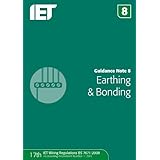Unless the "bond" is non conductive then anything "bonded" to the main earth terminal ( MET ) is "earthed". Or are you saying the main earth terminal is not an earthing point ?
Silly me.......Of course on PME installs the MET is not earth as in ground but is the same as neutral ( incoming ) to which it is connected at the cut out.
So should the CPC "wire" be considered a "live" conductor ? It can get very "hot" when there is a problem in the supply network. This possibility of a "hot" CPC although rare, is probably the reason for the banning of the use of "earthed" equipment such as hedge trimmers by people who are standing on the real earth.
Silly me.......Of course on PME installs the MET is not earth as in ground but is the same as neutral ( incoming ) to which it is connected at the cut out.
So should the CPC "wire" be considered a "live" conductor ? It can get very "hot" when there is a problem in the supply network. This possibility of a "hot" CPC although rare, is probably the reason for the banning of the use of "earthed" equipment such as hedge trimmers by people who are standing on the real earth.


